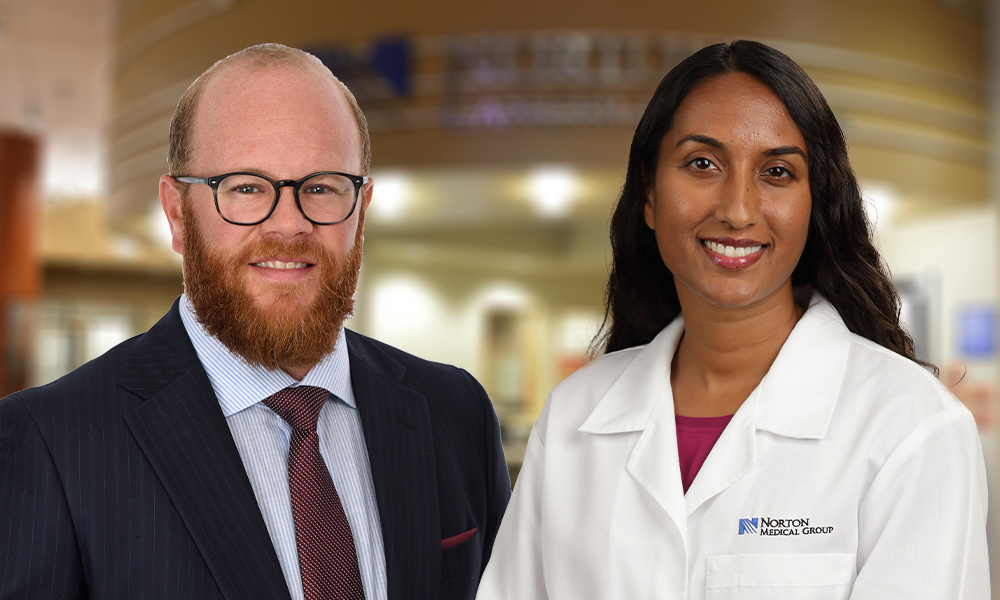At Norton Leatherman Spine, we are working hard to reduce opioid use before and after back surgery, and for back pain in general.

Until recently, opioids have been the analgesic of choice for managing back pain before and after surgery. Now we are in the midst of an opioid crisis and know all too well the many drawbacks of opioids.
At Norton Leatherman Spine, we take seriously our role in reducing this public health catastrophe. We are working hard to reduce opioid use before and after back surgery, and for back pain in general.
Research has shown use of opioids for pain before surgery is associated with higher in-hospital opioid consumption and poorer postoperative quality of life. It also increases the risk for chronic opioid use. Use of opioids after surgery puts patients at greater risk for long-term use of the drugs — something that is all too frequent. Research has shown as many as 38% of patients are still using opioids one year after elective spine surgery.
As we focus on reducing opioid use, we still need to address back pain. Low back pain is the leading cause of disability worldwide, with a lifetime prevalence that may reach 84%.
Finding adequate pain relief to fill this enormous need is a challenge. As a comprehensive center with a multidisciplinary team — as opposed to a pain clinic — our goal is not just to lessen pain but to increase function and improve quality of life.
Looking at pain relief for low-back pain, the traditional choices offer only modest relief, at best.
Randomized, placebo-controlled trials have found acetaminophen has no effect on acute or chronic back pain, while nonsteroidal anti-inflammatories were deemed to have a slight effect on acute pain and a slight-to-moderate effect on chronic pain. Muscle relaxants were effective at relieving acute pain, but they are not recommended for long-term use.
One option that has been explored recently is the use of cannabinoids for pain associated with orthopedic surgery. Unfortunately, a systematic review found little convincing evidence they are effective as adjunctive analgesics to reduce opioid use.
As we look to reduce opioid use and alleviate pain, neuromodulation may provide a viable alternative.
One study found postoperative opioid use was significantly lower in patients who used some sort of neuromodulation therapy.
Neuromodulation alters pain signals as they travel up the spinal cord and to the brain. It appears to work by taking advantage of neuroplasticity — functional and structural changes in response to stimuli — to alter neuronal excitability.
One common form of neuromodulation for pain is dorsal column stimulation, which is a type of spinal cord stimulation. The use of spinal cord stimulation has increased dramatically in the past two decades for such conditions as complex regional pain syndrome, post-lumbar laminectomy syndrome and painful diabetic neuropathy.
Refer a patient
To refer a patient to Norton Leatherman Spine, visit Norton EpicLink and open an order for Spine Surgery.
Dorsal column stimulation involves the placement of a lead containing multiple small metal electrode contacts on top of the dorsal columns of the spinal cord, in the epidural space. The leads typically are connected to a subcutaneous implantable pulse generator, analogous to a pacemaker. Historically, dorsal column stimulation took advantage of the gate-control theory of pain signal transmission, which postulates that introducing a nonpainful benign and novel sensation to the dorsal columns of the spinal cord can “close the gate” by activating inhibitory interneuron-based transmission of the painful signal up to the brain.
Studies have shown SCS for intractable back and limb pain increases the odds of reducing the use of pain medication.
Over the past decade, the field of neuromodulation for pain has undergone explosive advances in technology. These include:
- High-frequency spinal cord stimulation delivers short, high-frequency (10,000 hertz) and low-amplitude pulses at the T8 to T11 levels for low back and/or lower extremity pain.
The National Institute for Health and Care Excellence supports high-frequency SCS for chronic neuropathic pain in well-selected patients.
- BurstDR spinal cord stimulation sends pulse trains of five consecutive waves at 500 hertz, 40 times a second. The bursts are designed to mimic the firing properties of thalamic cells and target the affective response of the brain to painful stimulus. Studies, most of them industry-sponsored, found BurstDR SCS performed better than traditional paresthesia-based stimulation for pain reduction.
- Closed loop spinal cord stimulation can adjust stimulation in real time based on evoked compound action potentials, a measure of nerve fiber activation.
- Dorsal root ganglion stimulation targets the sensory cell bodies at the dorsal root ganglion of spinal nerves, located in the neural foramina. Dorsal root ganglion stimulation can be superior to dorsal column stimulation for conditions such as complex regional pain syndrome, post-hernia pain, post-knee replacement pain, and neuropathic pain of the pelvic, groin or foot region.
Neuromodulation is not a replacement for structural spine surgery, but rather an adjunctive category of surgical techniques that can be considered when structural spine surgery is either not indicated or not successful. We anticipate it will play an important role in reducing opioid use before and after surgery.
Jeffrey L. Gum, M.D., is an orthopedic spine surgeon with Norton Leatherman Spine.
Abigail J. Rao, M.D., is a stereotactic and functional neurosurgeon with Norton Leatherman Spine. She specializes in neurosurgical treatment of pain and has served as an invited faculty for national neuromodulation and board preparation courses.

